Anyone who hikes regularly is bound to experience altitude sickness from time to time. It can put a damper on conquering any mountain, and is over all just annoying to deal with. At any moment it can go from an inconvenience to life and death, which will really ruin any hike.
We are here to lay out the best tips and tricks to help you prevent altitude sickness, so that you can go back to just enjoying the view! We also have great ways to treat it if none of our prevention tactics are able to work.
Before we get to that, let’s delve deeper into what this sickness actually is, and what causes it. After all, you must know your enemy to fight your enemy.
What is Altitude Sickness?
First things first, what exactly is altitude sickness? It comes from not being able to get much oxygen at high altitudes, because the air is thinner the higher you climb. It tends to happen to people who are not used to going to such high altitudes, but for the most part anyone and everyone can be effected by it. Even someone who climbs every day can be taken down a peg.
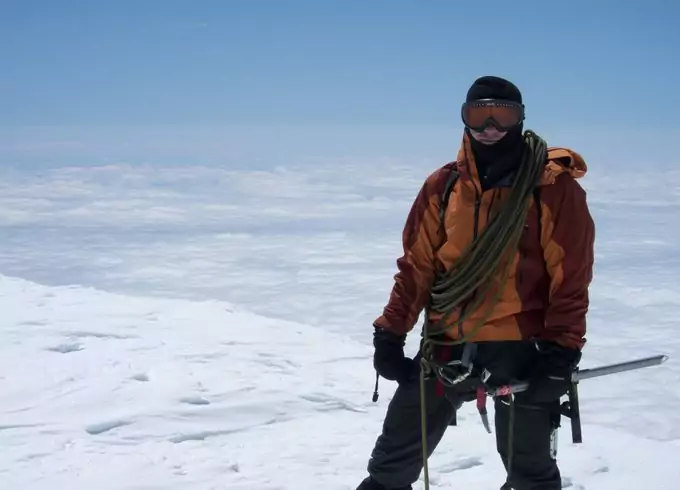
Altitude sickness is not typically deadly, and many hikers say it is about the same as a hangover. Unlike a hangover, altitude sickness can turn dangerous fast. In rare and extreme cases it can lead to death if not treated properly.
The big 3
There are three different types of altitude sickness.
- Acute Mountain Sickness – This is the most minor form of altitude sickness. Its symptoms are more of an annoyance than anything. It will occur within twelve hours of reaching a high altitude, and does not last more than three days. After three days, it is verging on becoming the second type of altitude sickness.
- High Altitude Cerebral Edema – This can sometimes come after Acute Mountain Sickness. At this point, the altitude sickness can be deadly. The symptoms become severe, and confusion sets in. Immediately get to a lower level, and seek medical help if the symptoms get worse.
- High Altitude Pulmonary Edema – This is the most deadly type, but usually only happens in altitudes of at least 14,000 feet. The hiker will find it hard to breathe, and start coughing. They should immediately get oxygen therapy, and descend as soon as possible.
Any altitude sickness that is more severe than Acute Mountain Sickness should immediately be treated.
The causes
At high altitudes the air gets thinner, and our body is not getting the oxygen it needs to. Most of the time it comes randomly, and with no apparent cause.
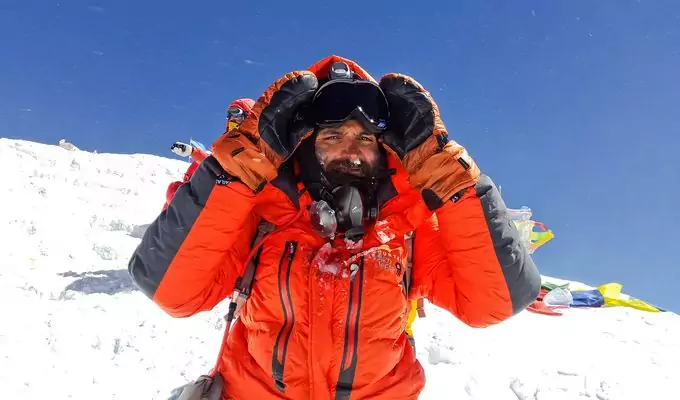
However, there are a few things that could trigger it, including;
- Ascending too high too fast and keeping your body from getting used to the change in oxygen
- Overexerting during the first twenty four hours of the climb
- Not drinking enough water, or substituting water with another liquid
- Hypothermia
- Drinking alcohol or using sedatives
The symptoms tend to subside after we get used to the thin air, but sometimes they worsen.
The general symptoms
Altitude sickness has several symptoms, the most common being;
- A throbbing headache
- Not wanting to eat
- Nausea, which might lead to vomiting
- Being weak and/or tired
- Being dizzy
- Having trouble sleeping/ waking up a lot during sleep
Sometimes the symptoms are not too bad, but they can get severe. If it begins to affect your lungs or brain you will become confused, and have trouble walking straight. Your lips or fingernails might turn blue, and when you breathe, it will sound like someone is crumbling paper.
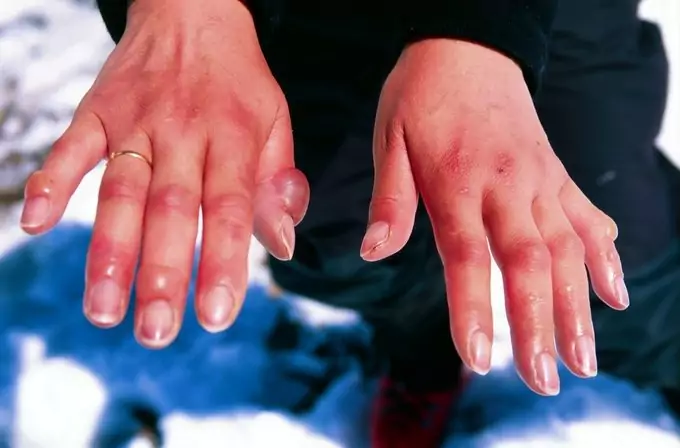
At this point the altitude sickness is getting close to being deadly. If your breathing sounds like paper being crumbled, or it is hard to breathe at all, then immediately seek medical attention. When the altitude sickness begins to turn into the second or third type, then new symptoms may occur.
Symptoms of high altitude cerebral edema
This is the point where altitude sickness can take a turn for the worst. The symptoms to look out for are;
- Any general symptoms
- Confusion (take this as the first sign to seek treatment)
- Can no longer do regular functions (like walking) because of tiredness or trouble breathing
- Coordination becomes extremely impaired
- Eventually a coma will develop
If untreated, this will lead to even worse symptoms and death.

Symptoms of high altitude pulmonary edema
This is the third and most deadly type of altitude sickness. It usually occurs after the general symptoms, but as it gets worse more symptoms will become present. They will include:
- Shortness of breath, even when resting
- Gurgling respirations (this is where your breathing may sound like crumpling paper)
- A wet cough accompanied by frothy saliva
- A fever
- Failure of the respiratory system. This is one of the latest symptoms, and extremely dangerous if not treated immediately.
How to NOT treat it
Before getting into how to treat and prevent altitude sickness, we are going to give you a quick rundown of everything NOT to do. Doing any of these things may worsen the altitude sickness, and could even cause it to take a turn for the deadly.
- Do NOT over exert yourself! It is important to rest, and limit activity to leisurely walking.
- Do NOT drink alcohol! Drinking water is fine, but just water.
- Do NOT go higher! Going higher can turn minor symptoms to severe, or even deadly.
- Do NOT give aspirin to someone younger than 20! Aleve and ibuprofen will work.
- Do NOT sleep during bad symptoms! Resting is important, but once the symptoms are bad sleeping can make it worse. Always descend or get treatment before falling asleep.
- Do NOT ignore your body! If your body is telling you to stop, then stop! It knows what it can and cannot handle.
If the symptoms become worse it is best to go to a lower altitude. If you are with someone who is experiencing moderate or severe symptoms NEVER leave them alone!
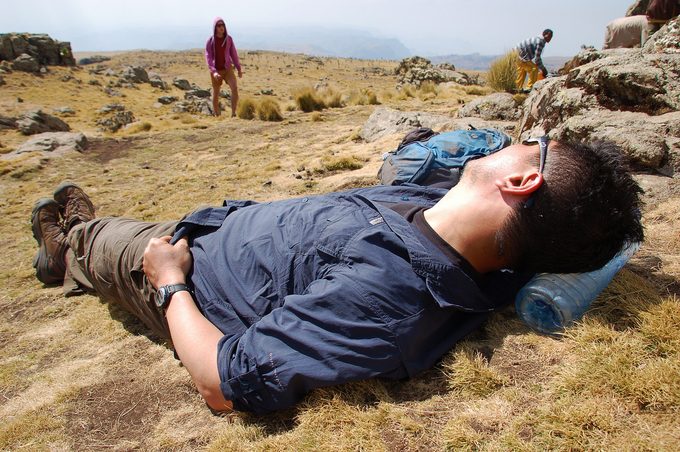
In general, it is dangerous to hike alone if you plan on reaching above normal altitudes. Having someone with you could be the difference between living and dying.
Tips to avoid altitude sickness
While there is no way to guarantee altitude sickness won’t strike, there are some ways to avoid it. Here are just a few tricks to keep it at bay on your next hike.
- Drink plenty of water – It is important to stay hydrated during any hike, but when trekking to higher than average altitudes it is best to drink twice as much water as you normally would. For tips on how to stay hydrated, see our article on this topic.
- Eat wise and healthy – the best foods to eat are; avocados, broccoli, bananas, celery, chocolate, pasta, and grains. Actually, pretty much any fruit or vegetable would be good to eat. Avoid salt whenever possible!
- Take it easy – If at any time it becomes hard to breathe, or you become excessively tired then slow down! There is no shame in descending to a lower altitude if you need to.
- Avoid the sun – The higher you go, the harsher the sun’s rays. Make sure to continuously apply sunblock, and get in the shade when you can. When it’s hot, see our article on the best hiking hats to keep you safe.
- Go slow – The main cause of altitude sickness is going too high too fast. Make sure to ascend at a slow pace, and stop if you need to.
- Rest a lot – Getting plenty of rest is one of the easiest ways to avoid altitude sickness.
- See your doctor – Sometimes doctors can prescribe certain medications to keep you from experiencing altitude sickness.

How to prepare
It is always important to prepare and plan before any hike, but it is even more crucial when going to a high altitude. These preparations can either fight or cause altitude sickness.
Planning is key
You should always have a route in place that allows you to only ascend a little bit each day. To keep from falling behind, it is wise to allow an extra day just in case you have to descend to get away from altitude sickness. Having this plan in place will make the trek run smoothly, and prevent frustration in the event of having to descend.
Getting in shape will only help
Altitude sickness plagues even the greatest athletes, but it will still be helpful to be in shape. People who are fit perform better under illness than someone who is unhealthy.
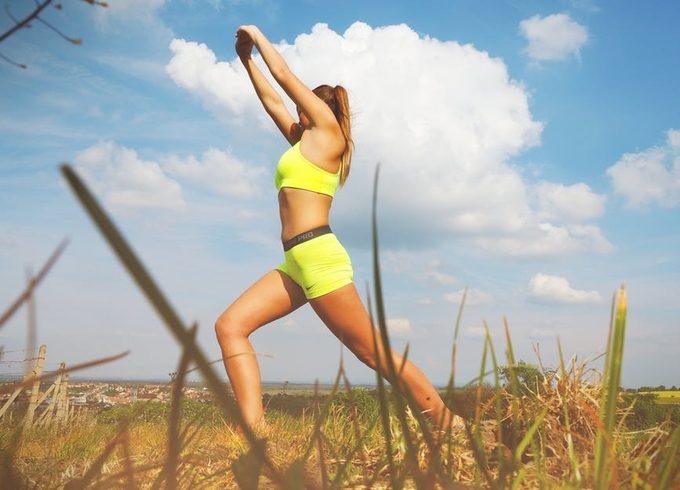
Being in shape will also make you more capable of helping others, especially if descending during an emergency. See our article on hiking workouts that you can do to prevent injuries.
Visit your doctor
Any kind of preexisting condition should be consulted with a doctor before hiking to high altitudes. They will be able to help you prepare, and prescribe any medications.
Medication
Speaking of medication, it can be a great way to fight altitudes sickness. Some of the best medicines that hikers like to use are;
- Acetazolamide – This medication is known for effectively preventing symptoms, but many hikers say the side effect are not worth the results.
- Dexamethazone – This is often taken with Acetazolamide, but can be taken alone. Many people agree that it should only be taken alone if the hiker cannot tolerate Acetazolamide.
- There are other effective medications such as: Methazolamide, Spironolactone, Nifedipine and Sildenafil, but none of these appear to be as effective.

Natural Prevention
For those who do not want to use medication, there are some natural remedies that can be just as effective.
- Gingko Bilboa – This supplement is reportedly as effective as Sildenafil when it comes to altitude sickness.
- Vitamin C – There is not much proof that this works, but it is worth a try if you do not want to use medicine.
- Coca leaves – Many people who spend a lot of time travelling to high altitudes use these in tea, and some just chew on them. There is no real proof that this works either.
Is medical care needed?
Sometimes nothing is effective in keeping altitude sickness away, and it may not always be obvious that the symptoms are getting severe. Medical care is not always required, but descending definitely could be. So when should you descend?
- If it is hard to breathe
- If you are becoming confused
- If you are too tired to do anything
- If you are losing coordination
There are times that descending is not possible. If that is the case then immediately seek out medical care if any symptom is becoming worse with time.
Is it really that serious?
Yes. Yes it is. In May of 2016 nearly a dozen hikers were killed by altitude sickness while climbing Mount Everest. In 2010 a university student died of altitude sickness near Lake Titicaca in Peru. Tourist hot spots that sit at extremely high altitudes are starting to outfit rooms with oxygen pumps to protect tourists.

Some places in Machu Picchu have oxygen that is blown out of the headboard while visitors sleep. With people going to such great lengths to keep altitude sickness from becoming deadly, it is safe to say that this is not something to be taken lightly.
Why are hikers still climbing?
If altitude sickness can be so dangerous, then why would hikers even risk it? The answer is simple: they love hiking and climbing! Yes, it can be deadly, but it can also be treated and prevented. With a little knowledge and preparation, altitude sickness does not have to be anything more than a small bump in the road.
A few things to remember
If you can make sure to just remember a few things, then we are willing to bet that altitude sickness will not be a problem at all.
- Take it slow! There is no need to overexert yourself, or climb too high too fast.
- Plan ahead! Proper planning can be a real life saver, especially when it comes to this!
- Look out for symptoms! Minor symptoms can be treated easily, but the second they become severe descend or get help.
With that in mind, and your new found knowledge of altitude sickness in hand, get out there and enjoy your climb!
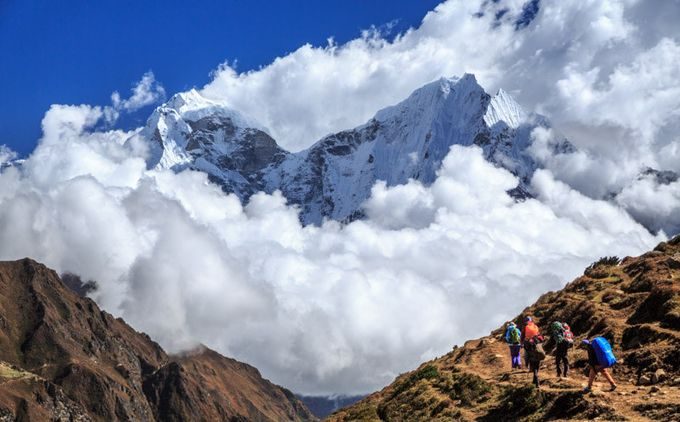
If you have some question regarding Altitude sickness, feel free to ask them in the comments section where you can also share some of your experience.

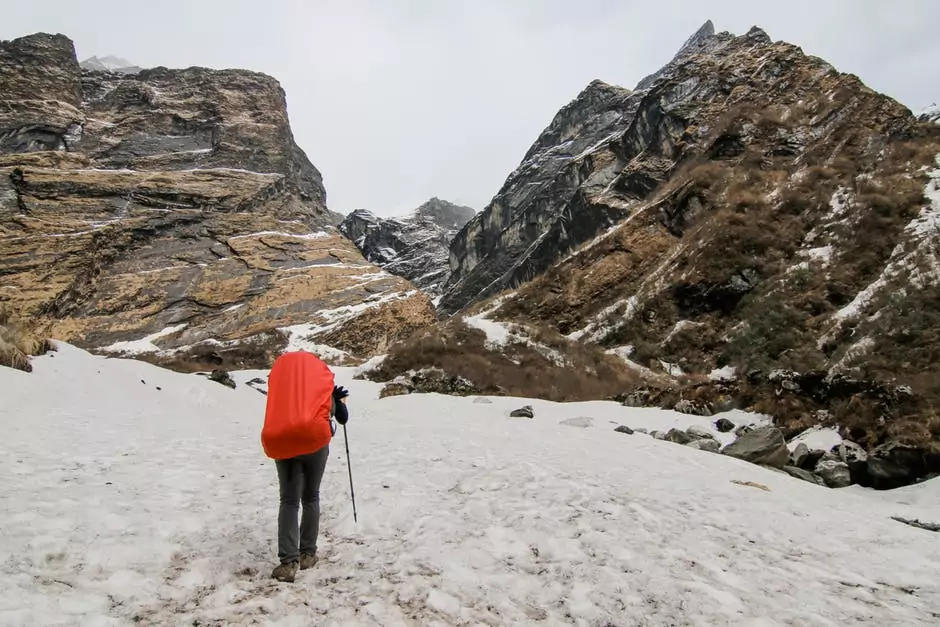

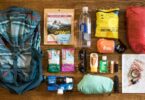
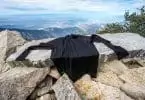
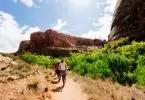
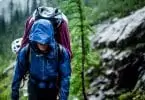
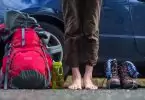
It is also good to know how to identify the symptoms of altitude sickness just in case you become a victim, which may include: shortness of breath, edema, nausea, insomnia, dizziness, headache, and fatigue.
Sometimes it is good to learn the hard way. At least you have firsthand experience of what altitude sickness is all about. So, you can effectively avoid it with the help of our tips.